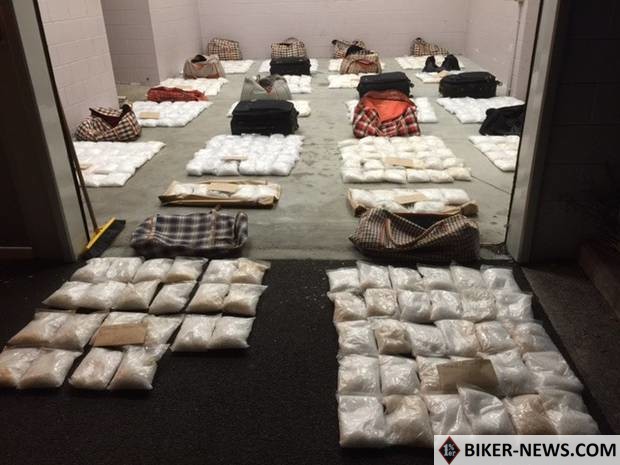For nearly 10 years, a shipment of nearly 100kg of methamphetamine was easily the largest in New Zealand history. So far in 2019, Customs and police have stopped four bigger smuggling attempts, including one last month of a staggering 469kg hidden inside electric motors. For the first time, more than 1000kg of the drug has been seized in a calendar year – and there’s still four months to go.
More methamphetamine has been seized in New Zealand so far this year than any other.
With just over three months left of 2019, investigators from Customs have already stopped 1087kg of the Class-A drug at the border.
Another 376kg slipped into the country and was discovered later by police, including the 200kg found in an Auckland apartment and the 60kg seized in Rotorua last month.
The combined total of 1463kg, according to data released by Customs and the police, makes 2019 the first calendar year in which more than a tonne of methamphetamine has been seized. It is also a 55 per cent increase on the previous record year – 941kg in 2016.
To put that in perspective, 3kg was seized in 2003 when methamphetamine was reclassified as Class-A following a spate of high-profile crimes linked to the drug.
“I never thought I’d see the day we’d see this amount of drugs in one seizure,” said Bruce Berry of the 469kg seizure, Operation Manta, referring to the evolution of organised crime over his 36 years working for Customs.
“That record number is only a number. We can fully expect that to be surpassed in the future. The demand for meth is relentless.”
However, the head of Customs investigations does not believe the increase in methamphetamine supply has been driven by an equal rise in demand.
Rather, Berry says transnational organised crime groups have changed the traditional demand-and-supply model by supplying methamphetamine in bulk and “stockpiling”.
The available drugs are then sold directly to buyers.
“Twenty years ago, you would have had an organised crime group in New Zealand who had a connection overseas and say ‘send me a 1kg of meth’ and they would supply the demand,” says Berry.
“Now, we’ve got multi-national organised crime groups sending shore parties here to receive drugs in bulk, unpack and prepare for sale. They’ve cut out the middleman. And it’s all about money.”
Berry says Customs and the National Organised Crime Group, specialist police squads, work closely together and with international law enforcement, such as Homeland Security and the Drug Enforcement Administration in the United States.
This has led to large shipments of meth and other drugs being stopped at airports or ports overseas, or intelligence for foreign law enforcement to investigate suspects higher in the supply chain.
New Zealand is one of the most lucrative markets in the world for methamphetamine and cocaine, with the high prices attracting the attention of Mexican cartels in recent years.
The Sinaloa and Jalisco cartels now compete with crime syndicates from Asia, in particular China, which have long been the main pipeline of methamphetamine, or its precursor ingredients, smuggled into New Zealand.
A kilogram of methamphetamine might sell for $1000 in Mexico or South East Asia, but fetch anywhere between $180,000 and $350,000 in New Zealand depending on the market.
And according to police analysis of wastewater testing – described by scientists as “one large urine test” – New Zealanders spend nearly $1.4 million on methamphetamine every single day. That’s 16kg a week.
“The wastewater data suggests that there is a strong market across New Zealand for methamphetamine, with it being found in all communities tested and found on every single day of testing,” Detective Superintendent Greg Williams wrote in an affidavit.
His affidavit was given as expert evidence in a recent hearing at the Court of Appeal which could lead to a major shakeup of prison sentences for methamphetamine crimes.
For years, the most methamphetamine, also known as P or Ice, discovered in one shipment was 96kg hidden in the bottom of green paint tins in Operation Major in 2006.
Now, 100kg or more is almost routine.
The record-breaking years of 2016 and 2019 are skewed by staggering discoveries of 501kg and 469kg respectively.
Just a few weeks ago, the final chapter in the saga of the 501kg found on 90 Mile Beach- the largest amount in New Zealand history – ended with the last sentencing of those arrested.
Many of those caught in Operation Frontia, or the sister investigation Operation Virunga, had been living in Australia for years or deported from there.
Hundreds of deportees from Australia, known as “501s” because of the section of the immigration law which allows people to be deported on character grounds, have been sent to New Zealand in recent years.
For several years, the police have warned of how these “Kiwis” would return to commit crimes and bolster the professionalism of the New Zealand underworld.
And it seems the two emerging threats of the Mexican cartels and the Australian deportees have become intertwined.
In recent raids on the Comancheros, an Australian motorcycle club which established a chapter in New Zealand after members were deported, police alleged the club were working with the Sinaloa cartel.
Organised crime syndicates see the lucrative markets of Australia and New Zealand as a “two-for-one” deal, because of the close proximity of the two countries.
“It is easy to believe that New Zealand is a little country and organised crime groups don’t know who we are and don’t really see us as a market. That myth is gone,” says Detective Inspector Tom Fitzgerald, the police liaison officer based in Canberra.
“The easiest way to explain it is if it’s Australia’s problem, it’s our problem . . . If you were setting up business in Australia and you saw a lucrative market over the ditch, three hours away, you would grab it.”
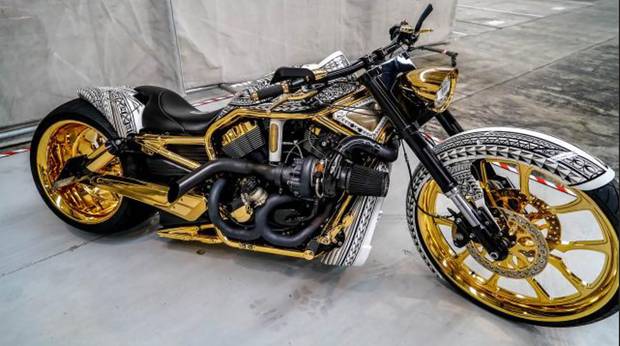
Fitzgerald, who was interviewed as part of the Herald’s feature-length documentary Fighting the Demon, works closely with the Drug Enforcement Administration of the United States.
“If you were to ask any significant trafficker what is the best market for meth and coke in the world, they would say Australia and New Zealand,” said Kevin Merkel, who is based in Canberra as the DEA attache for the region.
“The same people that are pumping drugs out to the United States are the same ones that are pumping out drugs here. If they see potential to make more money, they’re going to do it.”
Fitzgerald and Merkel say the relationship has progressed in the last 18 months from sharing intelligence to actively working on operations together.
This co-operation will only grow stronger with the DEA opening offices in Auckland and Wellington, says Merkel.
“We can’t do it by ourselves, Australia can’t do it by themselves, New Zealand can’t do it by themselves. Trans-national organised crime, by definition, don’t do it by themselves. They don’t see borders, they don’t care about the laws. They’ve got historical connections across the world, that’s why they’ve made literally billions of dollars in the drug trade,” says Merkel.
“That’s why we have to work together.”
But law enforcement agrees solely targeting the supply chain won’t solve New Zealand’s meth problem and welcome a greater focus on education and health to curb demand.
Police officers have been involved in a groundbreaking programme, Te Ara Oranga, which sees police and health staff work together in Northland to treat meth addicts.
The pilot, which also featured in Fighting the Demon, secured $4 million in this year’s Budget.
The funding is expected to help an extra 500 people a year with meth issues.
The cash boost for Te Ara Oranga is part of the Government’s promise of an extra $1.9 billion into mental health and addiction, including $455m for frontline services.
Mega meth busts in 2019
August:
Three men arrested after shipment from Thailand was searched by Customs officers when it arrived at the Ports of Auckland.
The shipping container held 60 electric motors, each hiding an average of 8kg of methamphetamine. The total of 469kg has an estimated street value of about $235 million.
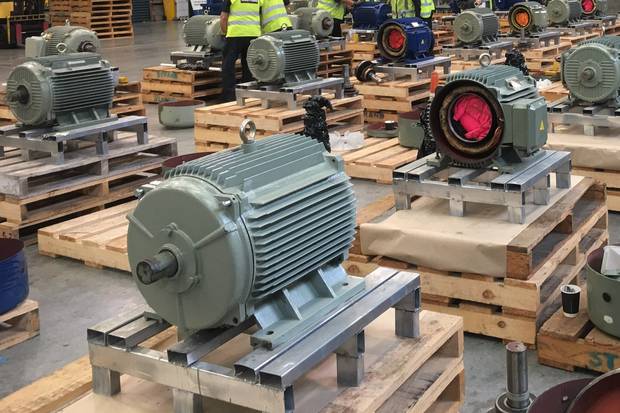
August:
Two British men in Auckland were allegedly busted with more than 200kg of methamphetamine – worth about $144 million on the street market – after police targeted members of an international crime syndicate.
Police arrested a 60-year-old British man after raiding a central city apartment and allegedly finding a wardrobe full of cardboard packing boxes which contained methamphetamine.
The second man, 49, was arrested at the airport as he allegedly tried to flee the country.
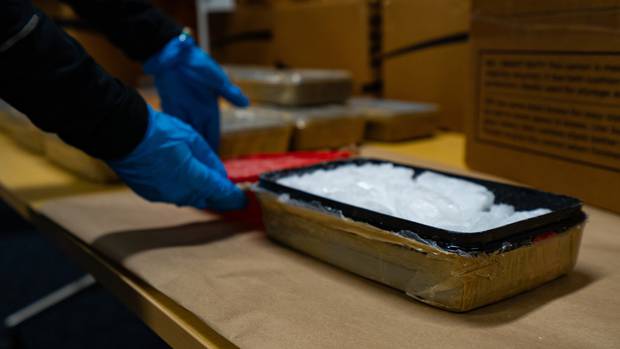
July:
Two Australian men were arrested as Customs seized up to 100kg of methamphetamine with a street value of up to $50m.
The duo allegedly imported and possessed between 70kg and 100kg of methamphetamine, hidden inside plastic storage pallets.
Customs said the concealment method used was “quite sophisticated and not easily identifiable”.
The search of the West Auckland home of one of the accused allegedly uncovered up to $50,000 cash, hidden inside a dishwasher and a backpack.
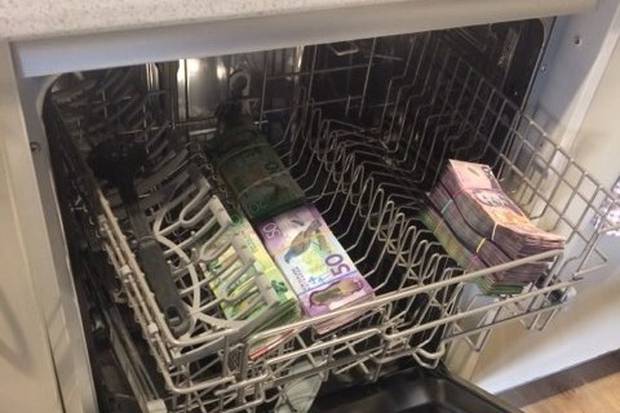
February:
Two men protested their innocence after allegedly trying to smuggle 110kg of methamphetamine and two handguns into New Zealand inside golf cart batteries.
The large quantity of “ice-like” methamphetamine had a street value of about $55m.
A Taiwanese national, 39, and a Chinese national, 27, were arrested by Customs over the seizure.
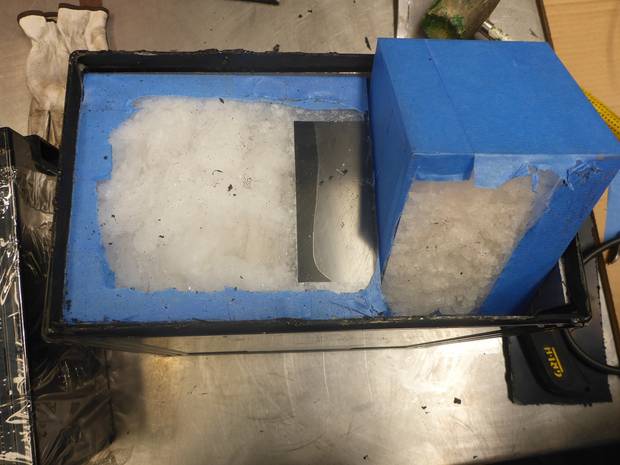
Make Sure You are Subscribed to our Facebook page!
Source: NZ Herald
